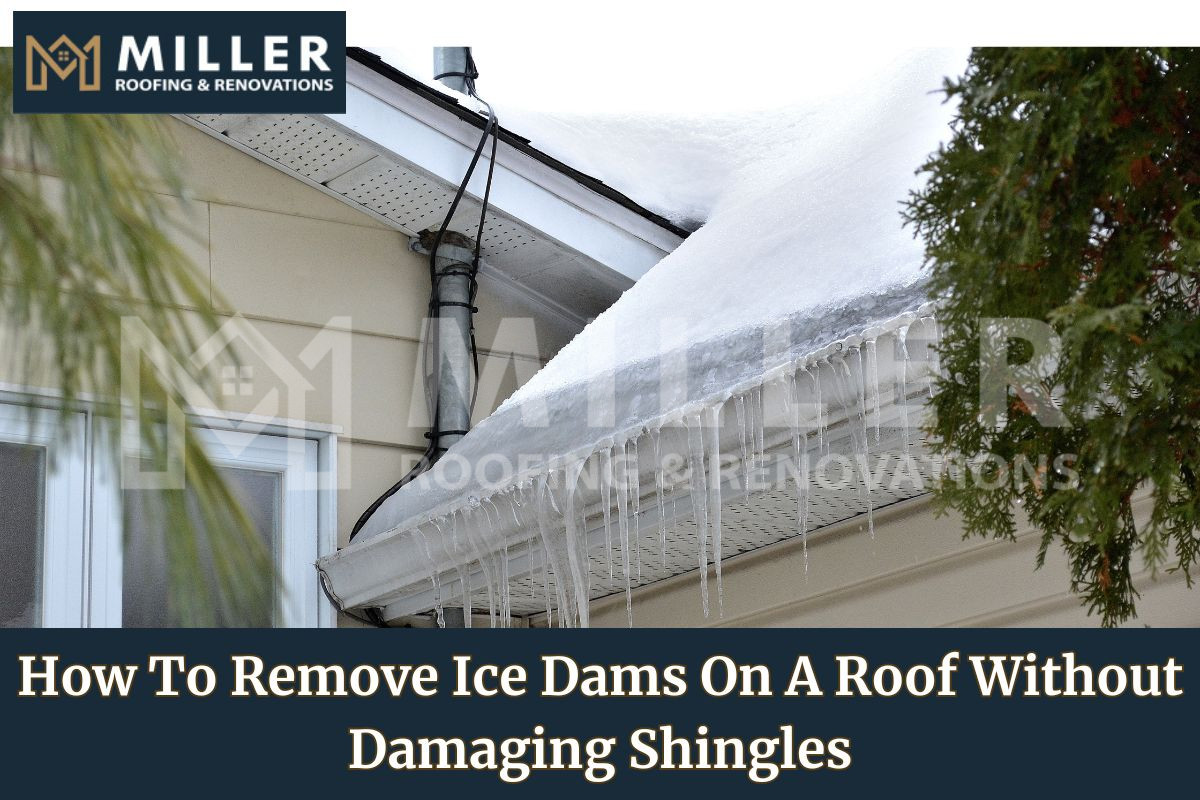With the frequent swings in temperature this winter in Tennessee, ice dams have become a significant problem for homeowners. While many may think water damage is a problem caused solely by the gutters, ice dams can also play a large role in this form of damage. As snow melts and refreezes along the edge of your roof, this added weight and build-up of ice causes some major damage if it’s not taken care of quickly.
In this blog post, we’ll discuss how to remove ice dams on the roof without causing damage to the layer of shingles you have installed. This way you won’t cause further damage to your home by trying to take preventative measures.
What Causes Ice Dams On A Roof?

To get a better understanding of how to handle ice dams, you need to know what causes them to form in the first place. Here are some examples:
#1. Uneven Roof Surface Temperature:
Ice dams form when there is a significant temperature variation across the surface of the roof. Because hot air naturally rises, the peak of your roof is a lot warmer than the eaves, and as the hot surface of the peak causes snow to melt, this snow flows to the eaves where it refreezes along the colder roof edge, forming a dam.
#2. Little To No Thermal Barrier:
While hot air may rise, its ability to melt snow on the roof can be reduced by having the proper amount of insulation within your roof and attic. Insulation provides a thermal barrier that keeps heat from transferring between the interior and exterior of your home. Without it, the heat within your attic will easily pass through the surface of the roof, melting the snow sitting on top.
#3. Snow Accumulation:
Frequent snowfall provides additional material for ice dams. As snow builds up, its weight can trap heat on the surface of your roof, causing the lower layer to melt and begin the formation of the ice dam.
#4. Roof Design and Pitch:
Roof slope influences ice dam formation. Low-slope roofs are more prone to ice dams than steeply sloped roofs, as the melted snow and ice easily build up with nowhere to run off, forming the ice dam.
How To Get Rid Of Ice Dams On A Roof
Now that you have a better understanding of how ice dams form, here is how you can safely remove them from your home and keep you and your property safe.
#1. Control Heat Loss
To prevent ice dams, it’s crucial to manage heat loss from your home. This involves ensuring that your attic has proper insulation and ventilation. Insulation helps maintain a proper temperature in the attic, reducing the risk of snow melting on the roof and forming ice dams. In turn, adequate ventilation ensures that warm air escapes, preventing heat buildup that can contribute to ice dam formation.
#2. Remove Snow From The Roof
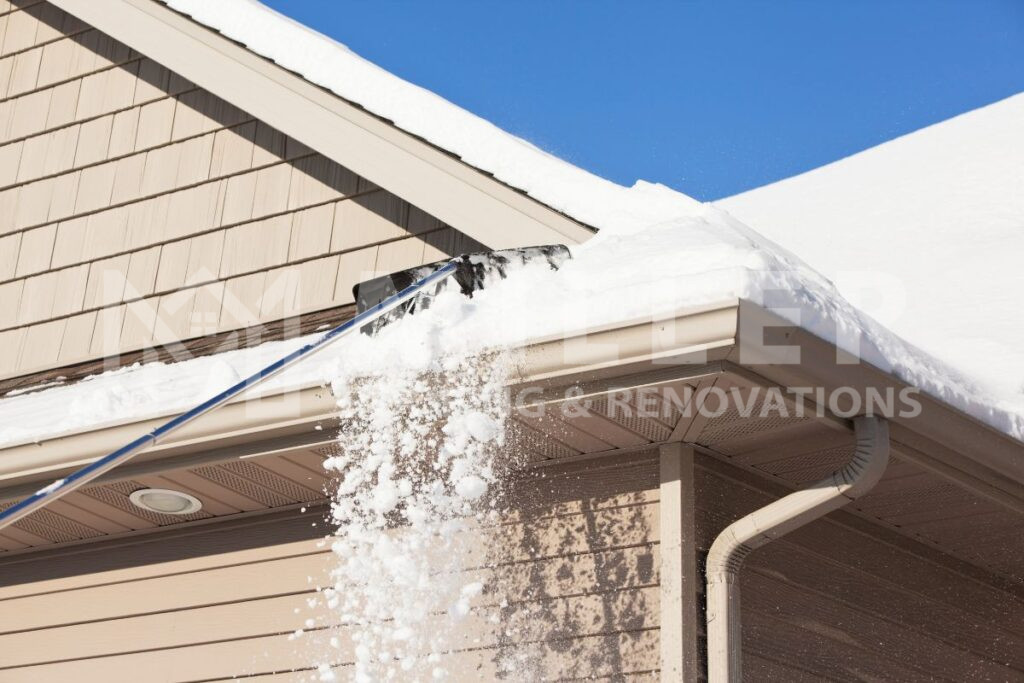
One direct way to combat ice dams is by eliminating the snow contributing to their formation. Use a roof rake, or hire a professional team to remove excess snow from the roof safely. This prevents a buildup that will lead to melting and refreezing, reducing any likelihood of ice dams forming.
#3. Seal Any Air Leaks
Sealing air leaks in the attic or walls is crucial to preventing ice dams. These leaks allow warm air to escape, leading to the melting of snow and ice on the roof. By effectively sealing these leaks, you can maintain consistent temperature, reduce the risk of ice dam formation, and protect your roof and home from potential damage.
#4. Use Heating Cables
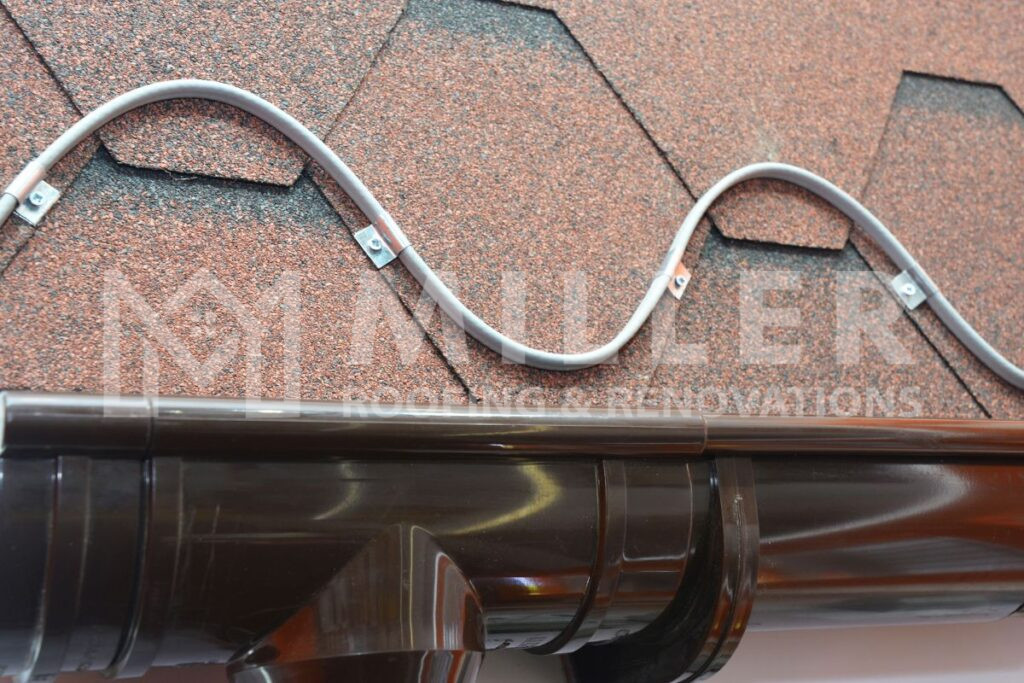
Installing heating cables along the roof’s edge in a zigzag pattern is an effective way to prevent ice dams. These cables keep the roof’s edge at a consistent temperature, preventing snow from melting and refreezing. This, in turn, minimizes the risk of ice dams lifting shingles and causing leaks.
#5. Install Metal Ice Belts or Panels
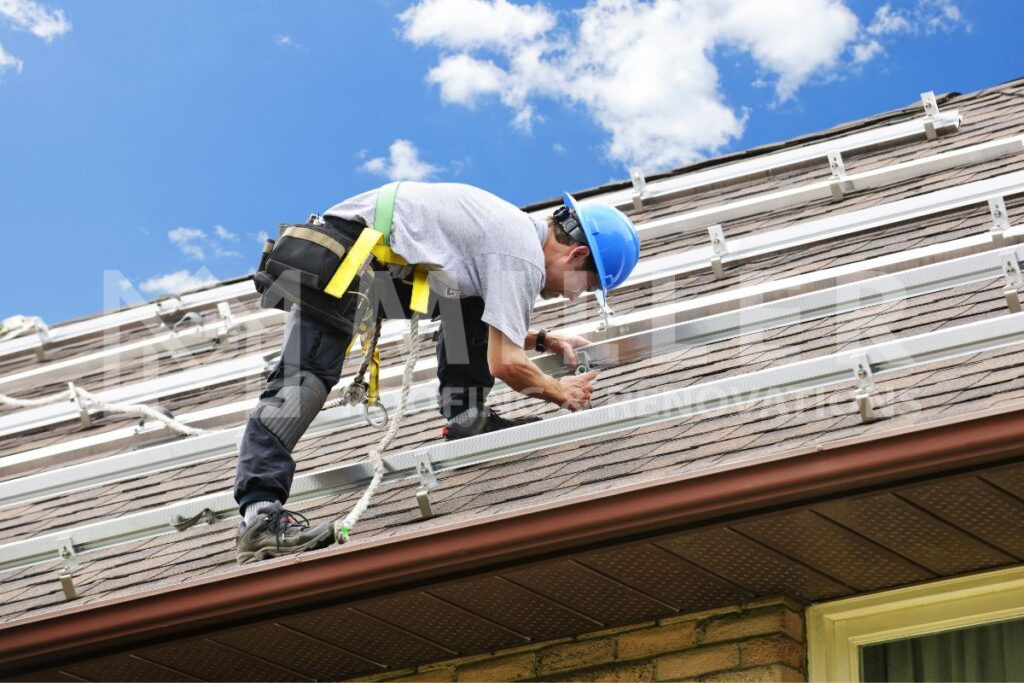
On a shingle roof, you may notice metal panels installed on the edge of the roof before it transitions to shingles. This is the ice belt that minimizes ice dams forming on the roof’s surface. While they are not foolproof, they offer an extra layer of defense against any potential damage caused by ice dams.
#6. Keep Your Gutters And Downspouts Clean And Free Of Debris
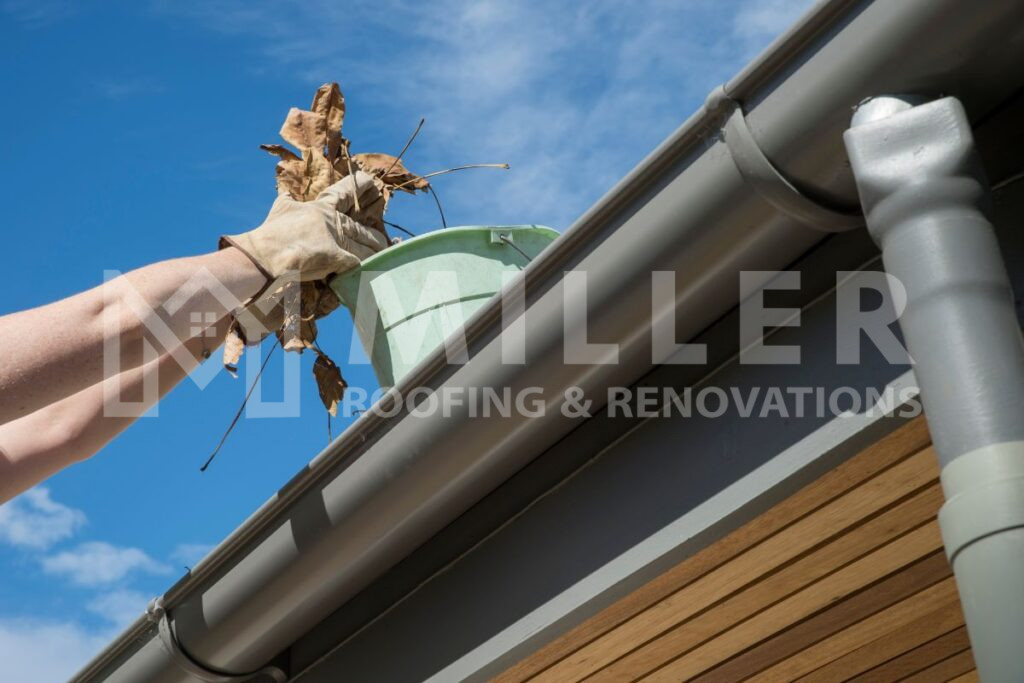
Clogged gutters, filled with leaves, twigs, and debris, impede water flow, causing trapped water to freeze and contribute to ice dam formation. To prevent this, regularly clean gutters and downspouts, particularly before winter. Installing gutter guards also keeps debris out, while downspout extensions redirect water away from the roof’s edge. Conduct regular winter inspections and promptly clear any blockages.
How To Avoid Shingle Damage When Removing Ice Dams
Here are some more tips to keep in mind when you’re trying to safely remove ice dams from your roof without damaging the shingles:
- Safety First: Assess the situation for loose or unstable icicles before proceeding to avoid potential injuries.
- Use A Roof Rake or Broom: Gently pull accumulated snow off the surface of your roof with a snow rake or long-handled broom, taking care to ensure that it does not harm your shingles or gutter system in the process. Also ensure that you are a safe distance from the edge of the roof and not standing directly below it, as this will increase your risk of harm.
- Avoid Using Salt Or Chemicals: It’s crucial to avoid using salt or chemicals on your roof to melt ice, as they can cause some major damage to both the roof and gutters. Salt, in particular, can accelerate the corrosion of metal flashing and may harm vegetation. Instead, opt for a de-icing agent that is safe for your roof and gutters, such as calcium chloride. This alternative effectively melts ice without posing the risk of structural damage.
- Consult Professionals: If you’re unsure of the best route to take, seek advice from a roofing contractor or insulation specialist. They can assess your roof, identify issues, and offer tailored recommendations to prevent ice dams.
- Prevent Future Ice Dams: Ensure proper attic insulation and ventilation to minimize heat transfer to the roof. Regularly use a roof rake to safely remove snow and prevent ice damming on the roof
Want To Get Rid Of Ice Damming On Your Roof? We’re Here To Help!
Dealing with ice dams on the roof during the winter requires a delicate balance between effective removal and protecting your shingles. Understanding the formation of ice dams, utilizing the right tools, and adopting preventative measures are crucial steps to safeguard your roof from potential damage.
Take prompt action to address the issue, and if you’re uncertain of what to do, consult with our team at Miller Roofing and Renovations to ensure that ice dams are removed effectively and safely. By being proactive and cautious, homeowners can protect their roofs, avoid expensive repairs, and stay safe and warm during the winter months.
Miller Roofing and Renovations offers residential roof repair services in Memphis and the surrounding areas in Tennessee. Our commitment to conducting a thorough investigation to pinpoint the source of leaks and address them promptly with no delays is why we’re praised by homeowners. If you need help with ice dams or damage caused by ice dams, reach out for a free estimate and efficient solution by giving us a call at (901) 457-9405.
